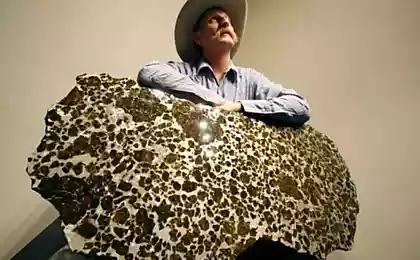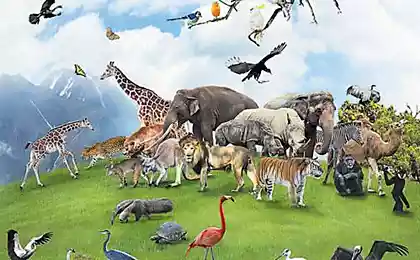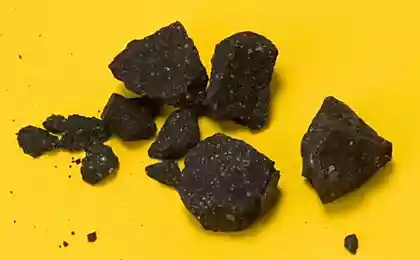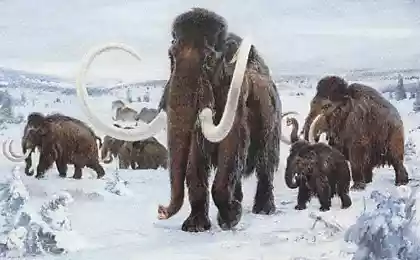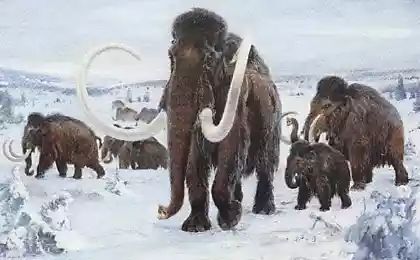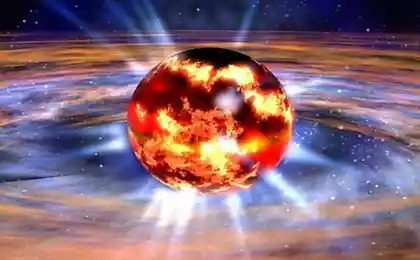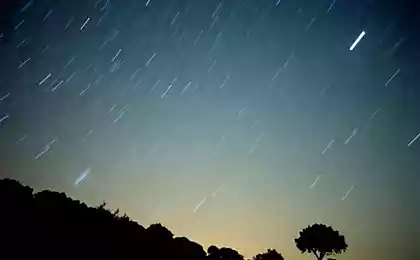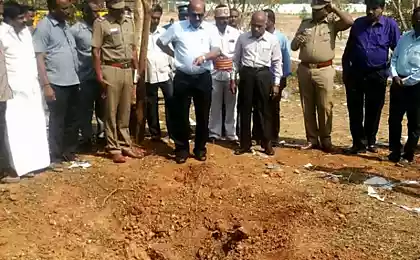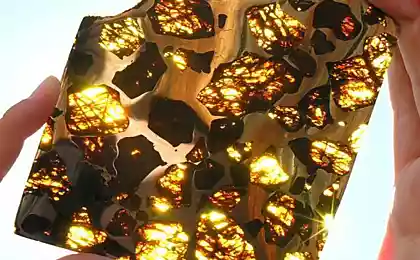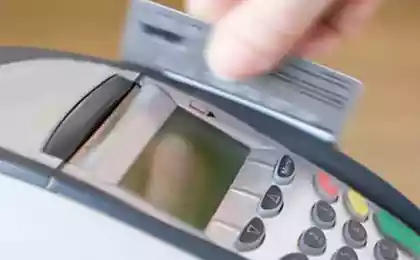456
Popigai meteorite led to the mass extinction of species
New data suggest that the largest meteorite crater associated with the mass extinction that took place to 33.7 million years ago. The study was published in the annual Goldsmithscouk geochemical conference.
Researchers from the University of California (USA) were able to accurately determine the age of rocks from the bottom of the Popigai crater in Siberia: they belong to the Eocene epoch mass extinction that occurred to 33.7 million years ago. Popigai crater is one of the 10 largest impact craters Earth, and in 2012, Russian scientists said that the crater is a giant stockpile of industrial diamonds.
A new era came later than expected, which means that the cause of extinction during the Eocene epoch was not climate change, "nuclear winter". Closing the Earth's atmosphere a multitude of tiny particles reflecting sunlight, meteorite explosion can cause deadly global cooling.
"I have no confidence that this assumption is correct, but it allows you to re-look at the role of the Popigai meteorite mass extinction," says the study's lead author Matt Wielicki (Matt Wielicki), a student from the University of California.

Space objects not for the first time as the cause of mass extinctions. Among other possible causes indicated three other cases of the collision of the Earth and meteorites that have occurred 35-36 million years ago: Chesapeake crater on the coast of Virginia (USA), crater, canyon Toms on the coast of new Jersey (New Jersey) and Mistaken-crater in Labrador (Canada).
Previously, all four of the crater was not taken into consideration because of their age. Scientists assumed that the age of the Popigai crater is 35.7 million years. But, according to Wielicki, two million years is too long period between the fall of the crater and the extinction of species. According to the most precise Dating, the time difference between outer strike that supposedly killed the dinosaurs 65 million years, and their extinction was 33 000 years.
As the meteorite could not be the cause of mass extinction during the Eocene epoch, scientists focused on the theory of climate change. In this case, according to scientists, many species have become extinct due to global cooling.
They were based on the following data: studying the isotopes (elements with different number of neutrons in the nucleus) of oxygen, carbon and other elements contained in rocks of Eocene, the researchers can estimate the temperature and levels of greenhouse gases in the past. The data show that the Eocene epoch was initially extremely warm, and then shifted to cold and dry weather prior to global extinction. However, the climate signals of late Eocene show that the era ended a short but global cooling, followed by return to warm temperatures.
"The age of the crater is exactly the same with this short-term cold snap," says Wielicki.
Wielicki believes that a meteorite impact caused global cooling, similar to climatic catastrophes, observed after major volcanic eruptions. The fall of the meteorite could raise a large number of reflecting sunlight drops of sulphur in the atmosphere. The result of the "fast" (in the framework of geological measurements) recovery of the planet was the fact that plants and animals have evolved, having acquired a modern look.
The end of the Eocene marked the latest mass extinction in Earth's history. Gone 90 percent of the snails in the heavy conditions were set to sea urchins, the first extinct species of toothed whales, instead of which, eventually, appeared modern types. Shortly after the transition from the Eocene to the Oligocene, followed by a significant change in the mammals of Europe.
According to the materials of Live Science.
Source: nauka21vek.ru
Researchers from the University of California (USA) were able to accurately determine the age of rocks from the bottom of the Popigai crater in Siberia: they belong to the Eocene epoch mass extinction that occurred to 33.7 million years ago. Popigai crater is one of the 10 largest impact craters Earth, and in 2012, Russian scientists said that the crater is a giant stockpile of industrial diamonds.
A new era came later than expected, which means that the cause of extinction during the Eocene epoch was not climate change, "nuclear winter". Closing the Earth's atmosphere a multitude of tiny particles reflecting sunlight, meteorite explosion can cause deadly global cooling.
"I have no confidence that this assumption is correct, but it allows you to re-look at the role of the Popigai meteorite mass extinction," says the study's lead author Matt Wielicki (Matt Wielicki), a student from the University of California.

Space objects not for the first time as the cause of mass extinctions. Among other possible causes indicated three other cases of the collision of the Earth and meteorites that have occurred 35-36 million years ago: Chesapeake crater on the coast of Virginia (USA), crater, canyon Toms on the coast of new Jersey (New Jersey) and Mistaken-crater in Labrador (Canada).
Previously, all four of the crater was not taken into consideration because of their age. Scientists assumed that the age of the Popigai crater is 35.7 million years. But, according to Wielicki, two million years is too long period between the fall of the crater and the extinction of species. According to the most precise Dating, the time difference between outer strike that supposedly killed the dinosaurs 65 million years, and their extinction was 33 000 years.
As the meteorite could not be the cause of mass extinction during the Eocene epoch, scientists focused on the theory of climate change. In this case, according to scientists, many species have become extinct due to global cooling.
They were based on the following data: studying the isotopes (elements with different number of neutrons in the nucleus) of oxygen, carbon and other elements contained in rocks of Eocene, the researchers can estimate the temperature and levels of greenhouse gases in the past. The data show that the Eocene epoch was initially extremely warm, and then shifted to cold and dry weather prior to global extinction. However, the climate signals of late Eocene show that the era ended a short but global cooling, followed by return to warm temperatures.
"The age of the crater is exactly the same with this short-term cold snap," says Wielicki.
Wielicki believes that a meteorite impact caused global cooling, similar to climatic catastrophes, observed after major volcanic eruptions. The fall of the meteorite could raise a large number of reflecting sunlight drops of sulphur in the atmosphere. The result of the "fast" (in the framework of geological measurements) recovery of the planet was the fact that plants and animals have evolved, having acquired a modern look.
The end of the Eocene marked the latest mass extinction in Earth's history. Gone 90 percent of the snails in the heavy conditions were set to sea urchins, the first extinct species of toothed whales, instead of which, eventually, appeared modern types. Shortly after the transition from the Eocene to the Oligocene, followed by a significant change in the mammals of Europe.
According to the materials of Live Science.
Source: nauka21vek.ru
Audi will present spring polymer reinforced with fibre glass
Squid can be the best protection from chemical weapons
